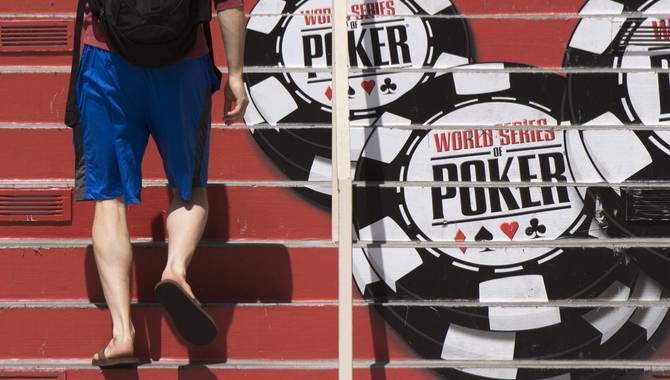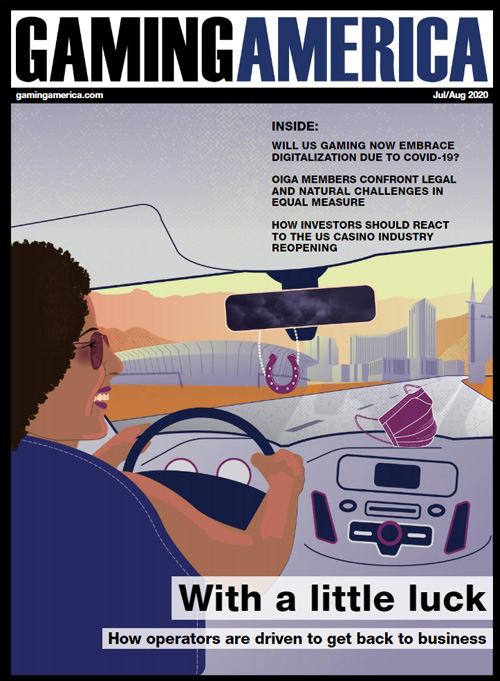
America loves a good comeback story. From a broken-legged Karate Kid to an ageing Rocky Balboa, there’s always been great respect for those who can live by the timeless words of Chumbawamba: “I get knocked down but I get up again.”
After experiencing a rocky (no pun intended) few years, the US online poker market could also have been considered down-and-out. However, the market seems to be undergoing a comeback story of its own, albeit through rather circumstantial means. In locking potential customers at home and cancelling most major sports competitions, COVID-19 suddenly placed online poker operators within the small category of gambling companies able to benefit from an otherwise dire situation.
Of course, the story of poker in the US is one as old as time itself, but online poker has experienced a different lifespan, one that’s seen a considerable shift in popularity over the last two decades. For us to understand the significance of its recent unprecedented growth, it’s important to look back at this history of highs and lows.
Although the history of real money online poker stems back to 1998, its first real explosion in popularity in the US occurred in the early 2000s with the Moneymaker Effect. In 2003, Chris Moneymaker claimed victory in the main event of the World Series of Poker (WSOP) after winning his entry with a $40 buy-in. Online poker suddenly became a viable skill-based way for amateur players to earn money from home, and Moneymaker’s name became synonymous with the vertical’s growth in the following years.
As a result of this spike in popularity, 2003-2006 became known as the glory years of online poker in the US. In 2003, the number of players in the WSOP main event was 839. Just a year later, that number more than tripled. By 2006, the WSOP main event saw a record 8,773 players compete for the $12m first place prize. The fact that this number still represents the peak for the tournament to this day demonstrates the detrimental effect of the events that followed.
In 2006, President George W. Bush introduced the Unlawful Internet Gambling Enforcement Act (UIGEA) which saw an end to US operations for the majority of online poker operators. Those who did continue to operate in the US would come to regret it. In 2011, a number of top online poker operators were penalized for processing transactions in direct transgression of UIGEA, including PokerStars, Full Tilt Poker and Absolute Poker. The day would become known as Black Friday in the online poker world, as it saw the three largest poker sites in the country shut down and their domains seized, along with their customers’ accounts and funds.
Adding fuel to the fire, a number of charges were filed against Full Tilt poker after it failed to pay off players following the forced shutdown of its website. In 2012, Pokerstars reached an agreement with the Department of Justice, which saw the operator purchase Full Tilt in an effort to save the brand from extinction completely. Demonstrating the dire circumstances surrounding online poker at that time, in acquiring the company, the operator also adopted almost $1bn in fines.
Of course, US online poker has seen some progress since 2006. Nevada and Delaware were the first two states to offer regulated online poker in 2012, and other states have followed since then. However, it’s clear that online poker activity in the US has been significantly hindered by the events of the past two decades—that is, until COVID-19 lockdowns reached US shores.
For those poker operators who have been able to capitalize on the conditions of lockdowns, it’s been a period of significant growth. This is true not just for the US industry, but across the globe, with some online poker markets doubling in size over the first few months of 2020. Ivonne Montealegre, founder and event director of the Malta Poker Festival, described the lockdown-fuelled comeback as a “second wave even bigger than the Moneymaker,” and as we look at the evidence from US poker operators it would be difficult to disagree.
Despite the brand’s troubles in 2011, the Stars Group currently operates its Pokerstars-branded real-money poker and casino products in New Jersey and Pennsylvania. The company saw significant growth across these products in Q1 2020, generating revenue of $735m for the quarter, a rise of 27% year-on-year. Despite the pandemic’s impact on the operator’s sports betting segment and FOX Bet product, increased customer activity across its online poker and casino product offerings more than made up for any disruption from the beginning of March.
In fact, as a result of this spike in poker activity, the Stars Group shifted its marketing efforts behind PokerStars. The operator launched the first Spring Championship of Online Poker in April in its two active states, with a total prize pool of $2m in Pennsylvania.
Meanwhile, 888 Holdings reported a 60% year-on-year increase in US traffic for 888poker in April. Yaniv Sherman, head of commercial development for 888, confirmed that the company’s Interstate Poker Network, which stretches across multiple states, had been majorly beneficial in taking advantage of increased poker activity. Sherman described “similar trends” across the company’s global poker network – something he explained as “a testament of a recreational destination that people are enjoying while sheltering in place.”
Another by-product of the pandemic has been the shift towards the digitalization of US-based poker events. This year, the WSOP tournament became an online-only event, and GGPoker made history by offering the biggest guarantee in online poker tournament history with the event’s $25m prize. Expressing the importance of such a significant moment, Ty Stewart, executive director of the event, commented: “We’re ready for a unique chapter in our history with an ambition as great as anything we’ve done, period. It’s the esports version of the WSOP and it’s going to be huge.”
Despite clear strides made in online poker’s credibility in the states, a question remains as to how long this popularity will last when lockdowns ease and sports return. For a number of reasons, it will be difficult for the vertical’s growth to maintain the pace experienced in the past few months. The economical situation in the US may well become worse as a result of the pandemic, and rising unemployment could create a decrease in spending levels. Then, of course, there’s the inevitable reality that the return of sports will divert some interest away from online poker – particularly in newly regulated states in which sports betting is the new shiny toy.
In its Q1 trading update, even The Stars Group seemed relatively pessimistic about the longevity of the vertical’s success. The operator admitted that the return of sporting events earlier than anticipated could benefit sports betting revenues but “could negatively impact the current increased activity across its online poker and casino products.”
The unprecedented nature of online poker’s comeback during the COVID-19 pandemic seems befitting of an unclear era. The period has seen some operators experience up to a 300% increase in revenue, but that growth has also recently levelled off. Regardless of whether we continue to see the same levels of poker activity, it seems that online poker is beginning to find its feet again in the US market. All it needs now is the stamina to hold its ground.

